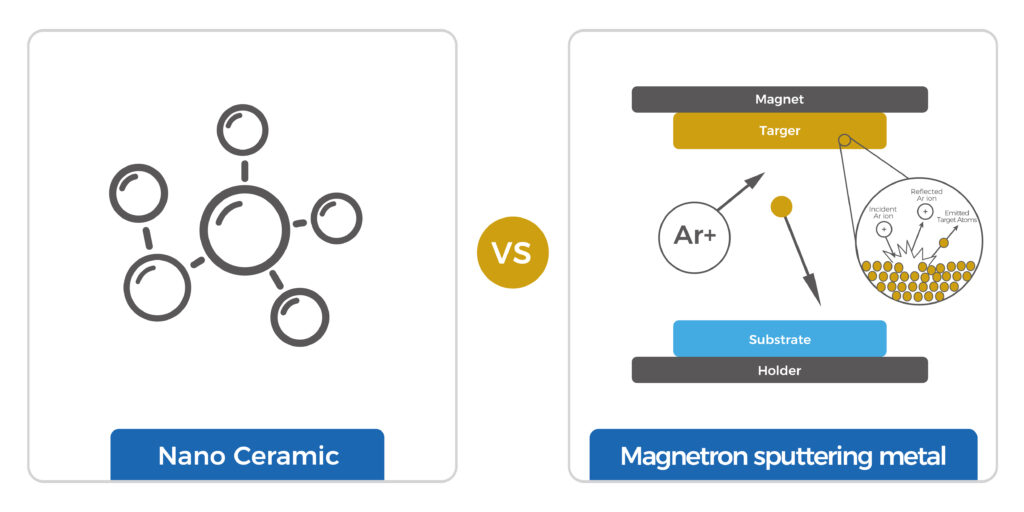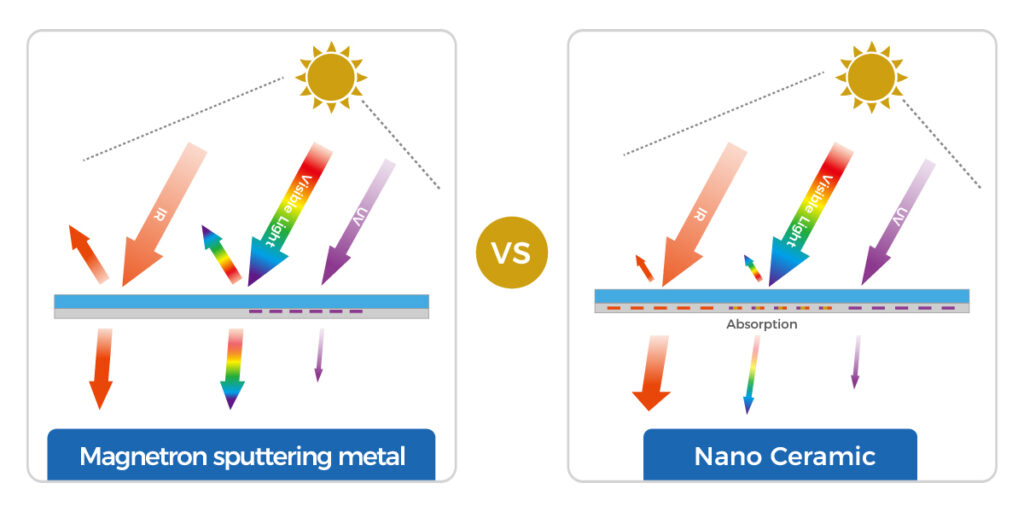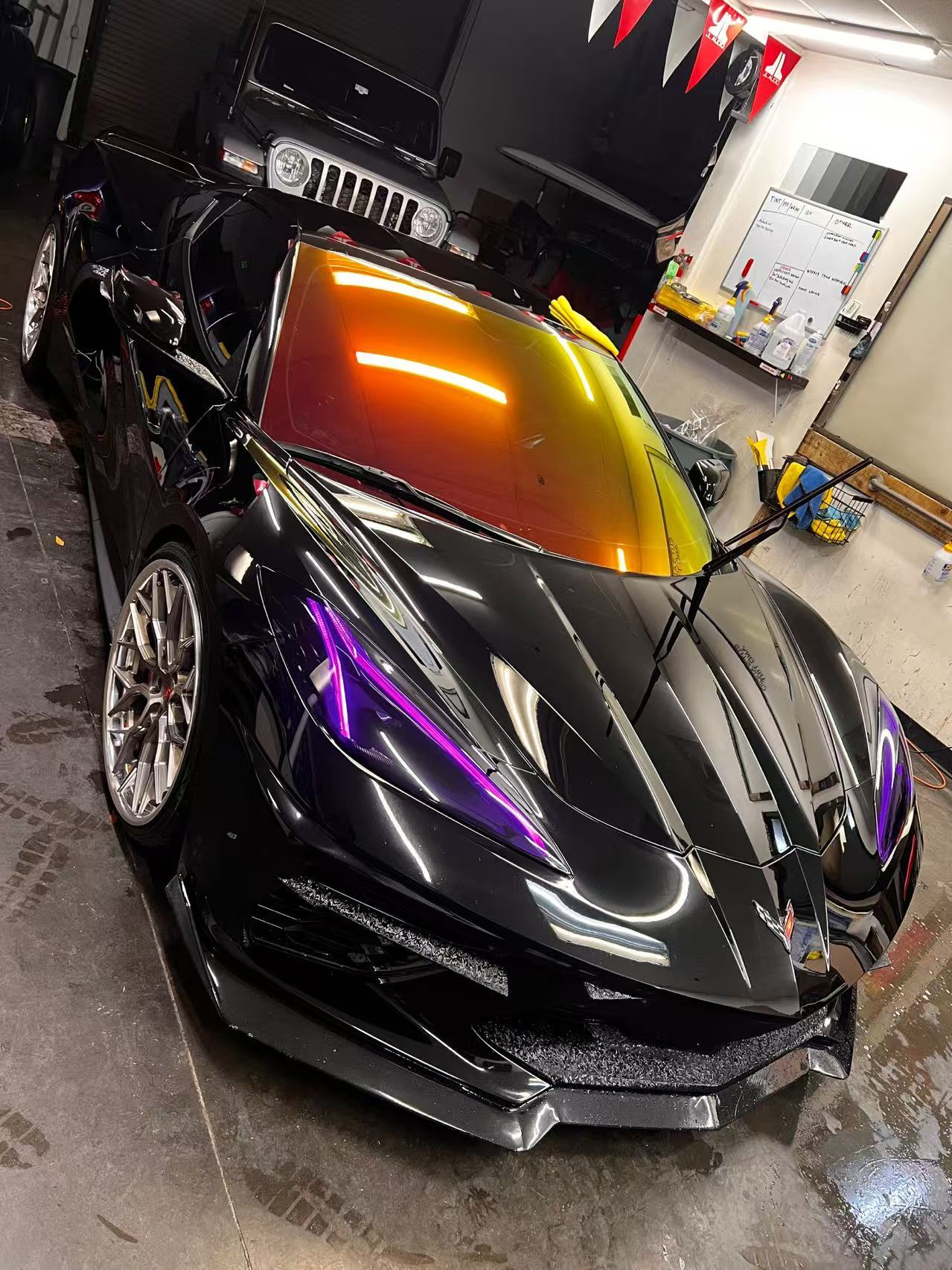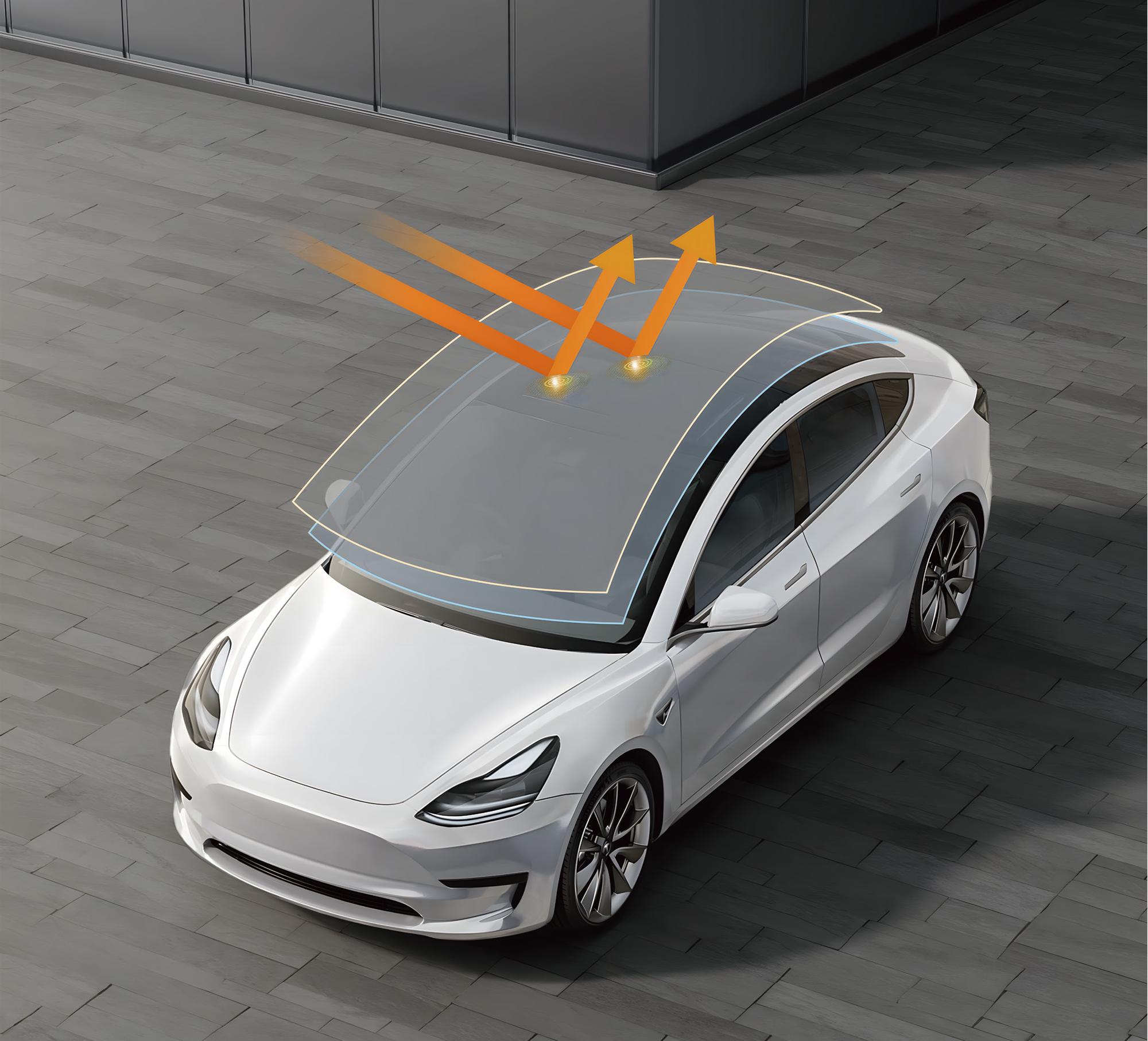Nano Ceramic Window Film VS Magnetron Sputtering Metal Film
Auto window films have evolved significantly over the past few decades, starting in the late 1960s when the first basic tinted films emerged. These early films primarily offered minimal heat rejection and glare reduction, mostly catering to aesthetic preferences.
In the 1970s, advancements in technology led to the introduction of dyed films, which provided better color options but still had limitations in heat rejection and fading over time. By the 1980s, metalized films began to surface, utilizing thin layers of metal to enhance heat rejection and UV protection, gaining popularity among consumers seeking both style and functionality.
The 1990s marked a turning point with the development of high-performance films, including hybrid and advanced ceramic options. These films offered superior clarity, heat rejection, and UV protection without the drawbacks of metal interference, such as signal blockage for electronic devices.
As environmental awareness grew in the 2000s, window tint manufacturers began to focus on energy efficiency, leading to the rise of eco-friendly films that not only improved comfort but also contributed to energy savings in vehicles.
In recent years, innovations in nano-ceramic technology have transformed the industry further, providing exceptional performance without compromising visibility. This shift has been driven by consumer demand for high-quality products that enhance comfort and safety.
Today, auto window films are recognized not only for their aesthetic appeal but also for their extensive benefits, including enhanced privacy, improved energy efficiency, and protection from harmful UV rays. The industry continues to evolve, driven by technological advancements and changing consumer preferences.
From the basic dyed film to Magnetron sputtering metal film, window film manufacturing technology has iterated multiple generation. After customer selection and preferences, two types of window film stand out from the rest- the nano ceramic film and Magnetron sputtering metal film.
But, as a tint shop or a tint installer, how to choose?
The core technology of Magnetron sputtering metal film- In a vacuum environment, the metal target is bombarded with electric ions to uniformly form metal ions which are evenly distributed to the surface of the PET substrate, achieving metal reflection. However,the metal element forms a Faraday cage (electrostatic shielding net), causing signal shielding problems. In addition, the metal element tends to have oxidation problems, resulting in serious functional decline over some period of service time on vehicle.
The essentials of nano ceramic film lie in the research and development of stable nanoceramic materials. By preparing a mixture of nanoscale ceramic particles (which are essentially metal oxides or compounds) and coating them on PET substrates, a dense insulation layer is formed to eliminate oxidation and signal shielding problems. High heat rejection can clarity can be achieved as long as the nano particles are processed to fine and uniform sizes about 25 nm in diameter. Nano ceramic materials are inorganic and they do not fade or block any signals.
To manufacture Magnetron sputtering metal film, expensive and high precision equipment is a prerequisite, resulting in high prices.
While for nano ceramic films, the manufacturing machines are not as important as for the metal films, the key is the quality of the nano materials and the technology to fine process the material to fine sizes and apply to the base film with precision.
Metal films reject heat by reflecting away 12-16% of the solar energy, while nano ceramic film absorbs the heat, which is carried away by the air flow.
It should be understood that whether it is metal film or ceramic film, the heat insulation effect can be the same, and both can do the job well when it coming to shielding heat, UV, glass protection, etc.
- KSB nano ceramic window films apply the easy-to-shrink optical PET material. Temperature between 200-300 Celsius or 390-500 Fahrenheit degree is best recommended for shipping. Excessive high temperature is not suggested.
- If the temperature is too high, it will cause over-shrunk, or uneven-shrunk, film clustering, glue failure or damage the film.
- When apply the films, try to squeeze out the water trapped inside so the film adheres to the glass as tight as possible. Let the film dry for 72 hours so there will be no moisture between the film and the glass.
- A good film also needs a good master, and each brand film may perform differently in terms of shrinking and performance. There will be a short learning curve. But rest assured, KSB film will just work out fine.








